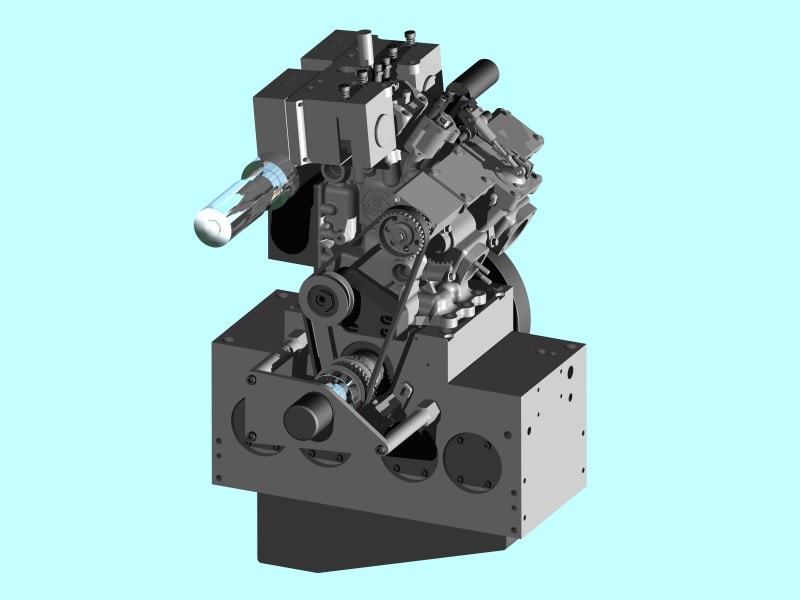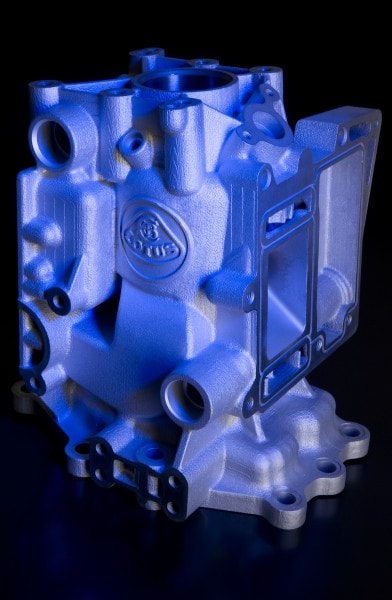Research into developing better yet more fuel-efficient engines is getting more an more of a rhythm these days, as the 2009 Geneva Auto Show is about to begin. What went on behind the scenes until now gets uncovered, as engine and car manufacturers try to get the upper hand. In that note, lotus Engineering released details on the work they have been doing so far.
The Omnivore engine concept does not use meat and vegetables to function. It just has a variable compression ratio system and two-stroke operating cycle with direct fuel injection that allows it to increase fuel efficiency for sustainable alcohol based fuels.
The engine features a monoblock construction that blends the cylinder head and block together. By doing this, there is no need for a cylinder head gasket. The application of a monoblock is possible due to the absence of poppet valves. A charge trapping valve in the exhaust port allows asymmetric timing of exhaust flow and continuous variation of the exhaust opening point.
The variable compression ratio is achieved by the use of a puck at the top of the combustion chamber. This system moves up and down affecting the change in geometric compression depending on the load demands on the engine.
“The absence of poppet valves in two-stroke engines makes the incorporation of a variable compression ratio system relatively straightforward. Our research into these systems on four-stroke engines has led us to the conclusion that while thermodynamically it is a desirable technology to incorporate, practically it is very difficult, particularly taking into consideration production feasibility," said Geraint Castleton-White, Lotus powertrain chief.
"This two-stroke engine could solve these practical difficulties and simultaneously permits a much larger range of compression ratio adjustment," added the official.
On display at the 2009 Geneva Auto Show will be the single cylinder research engine monoblock, which has an architecture designed for high thermal efficiency when fueled on any alcohol based fuel or gasoline.
The Omnivore engine concept does not use meat and vegetables to function. It just has a variable compression ratio system and two-stroke operating cycle with direct fuel injection that allows it to increase fuel efficiency for sustainable alcohol based fuels.
The engine features a monoblock construction that blends the cylinder head and block together. By doing this, there is no need for a cylinder head gasket. The application of a monoblock is possible due to the absence of poppet valves. A charge trapping valve in the exhaust port allows asymmetric timing of exhaust flow and continuous variation of the exhaust opening point.
The variable compression ratio is achieved by the use of a puck at the top of the combustion chamber. This system moves up and down affecting the change in geometric compression depending on the load demands on the engine.
“The absence of poppet valves in two-stroke engines makes the incorporation of a variable compression ratio system relatively straightforward. Our research into these systems on four-stroke engines has led us to the conclusion that while thermodynamically it is a desirable technology to incorporate, practically it is very difficult, particularly taking into consideration production feasibility," said Geraint Castleton-White, Lotus powertrain chief.
"This two-stroke engine could solve these practical difficulties and simultaneously permits a much larger range of compression ratio adjustment," added the official.
On display at the 2009 Geneva Auto Show will be the single cylinder research engine monoblock, which has an architecture designed for high thermal efficiency when fueled on any alcohol based fuel or gasoline.


